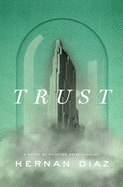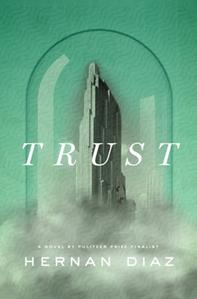
 Trust has one question at its heart: Who was Mildred Bevel? In Hernan Diaz's high-concept second novel, he takes a four-part approach to answering the question: Trust harbors, by turns, a short novel, an unfinished autobiography, a memoir and Mildred's own journal. While Diaz's book is an ambitious formal experiment and an engrossing study in unreliable narration, it also manages to be an ideological tour de force.
Trust has one question at its heart: Who was Mildred Bevel? In Hernan Diaz's high-concept second novel, he takes a four-part approach to answering the question: Trust harbors, by turns, a short novel, an unfinished autobiography, a memoir and Mildred's own journal. While Diaz's book is an ambitious formal experiment and an engrossing study in unreliable narration, it also manages to be an ideological tour de force.
In Bonds, a fictionalized version of Mildred's life, novelist Harold Vanner has renamed her Helen and her New York financier husband Benjamin. Referring to Benjamin's standing after the stock market crash of 1929, Vanner writes, "Only one man seemed to have been immune to the catastrophe." As Benjamin proceeds to multiply his assets, Helen's "quiet form of mania" grows so debilitating that he takes her to a sanatorium in Switzerland for treatment.
Benjamin comes across so atrociously in Vanner's novel that Mildred's husband, Andrew, on whom Benjamin is based, undertakes a score-settling autobiography, My Life. A rough draft of Andrew's book immediately follows Bonds and reads like a spluttering self-justification ("I have always been a guardian of public interest, even when it may seem that my actions go against the public interest"). As Benjamin does in Bonds, Andrew takes his wife to Switzerland for treatment, and again, as in Bonds, she doesn't recover, although in My Life it's physicians rather than psychiatrists who attend Mildred.
Trust's third section--A Memoir, Remembered--reveals that My Life was co-written by Ida Partenza, a secretary Andrew hired to help him with the book. Young Ida, like the reader, wants to learn the truth about Mildred's fate. However, it's not until decades later, in the 1980s, when Ida is an established 70-year-old writer, that she finally begins her memoir and detective work.
As in a traditional mystery, the truth isn't divulged until book's end, but in the meantime, Trust's other concerns--the clash between capitalism and communism; whether the 1929 stock market crash had nameable villains--are consuming. While Diaz (In the Distance) doesn't offer an effortless ride for readers who have no head for business, underneath the shoptalk is an exhilarating, unarticulated debate between Andrew Bevel's Randian individualism and the ideology that Ida learned from her Italian-immigrant anarchist father. Inevitably, Mildred has something to say about all this in the novel's fourth section, which comprises her heartbreaking--and, given her destiny, heartbreakingly named--journal, Futures. --Nell Beram, author and freelance writer
Shelf Talker: This heady historical novel uses four forms to illuminate its central character: a novel within a novel, an unfinished autobiography, a memoir and a journal.

